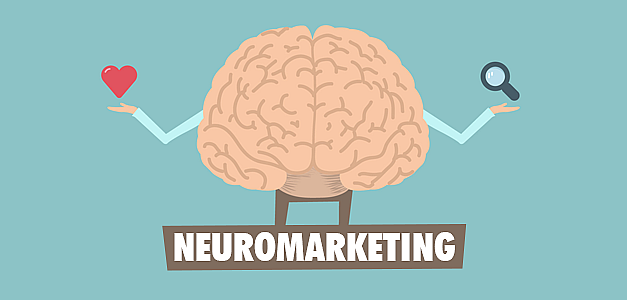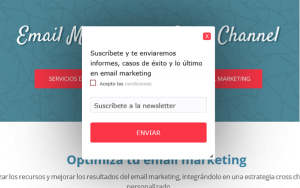How to apply Neuromarketing to your emails?

Knowing the strategies that the brain uses to "quickly draw conclusions" and act is something that neuroscience is studying and that communication and marketing professionals are exploiting. Today we will see here some examples of cognitive biases applied to the field of email marketing.
Reciprocity.
Our brain will tend to act in a certain direction simply because we perceive that we will get something in return. The fact that we get something in return in a given situation will cause us to judge it as valid or appropriate. What we get in return, and the implications of what we get in return, are secondary issues.

For example, on our website we have a pop-up where we ask the visitor to subscribe to our newsletter. We use the principle of reciprocity to "accelerate" the registration by indicating what you will get in return.
Principle of scarcity.
In a situation in which a person becomes aware that an asset that interests him or her may "disappear" in the immediate future, a psychological process takes place that leads to an increase in anxiety. The greater the anxiety, the less rational the decision-making, which becomes more instinctive.
This resource has been widely used in the field of direct and promotional marketing.

An example of trying to create a sense of urgency by using the scarcity of time.
Loss aversion.
People tend to prefer not to lose something they already have rather than gain something they do not have. This fact explains why it is common, especially in complex sales processes, to use mechanics aimed at mitigating the anxiety produced by not being sure of the benefit we will obtain if we change supplier or abandon the current one.
The following example illustrates this principle very well. The context is that of a tactical email marketing action aimed at reactivating inactive users. The main objective was to get users who had not opened the email for some time to do so. To do this, a battery of different subjects were tested; these were the results:

As we can see, the issue that managed to "move to action" the largest number of users, was the one that managed to activate the loss aversion mechanism. When we indicated to the user that we were going to remove him from the service (because he was in fact an inactive user) he decided to act.
Social Proof (social proof).
When we are in a situation in which we do not have the elements to make a judgement on something due to lack of knowledge, the fact that a large majority of people are pronouncing in a certain direction leads us to take that direction as valid. This phenomenon has been incorporated as a sales technique to persuade the consumer to buy a certain product.
Recourse to authority.
Similar to the previous principle, there is a mechanism by which people trust what an authority in a given field tells us. We receive so many marketing messages every day that the fact that a neutral authority with no commercial interest in a particular product gives us confidence that the product is truly the best.

Example of Invision's Social Proof. The fact that it is stated that there are more than 300,000 users who are part of the community will encourage us to uncritically take it for granted that it is also good for us.

In this example, we see how two bloggers who, as an authority in the field of cosmetics and beauty, can persuade the user who reads the email to buy those particular products.
When we plan an Email Marketing action, we have to take into account how to present the offer, the product attributes and the benefits that the user will obtain. The orientation we give to the subject line, copies and images we choose in an email marketing campaign, will greatly impact the results we get; therefore, resorting to the discoveries that have been made in the field of consumer behaviour in the light of neuroscience and psychology is a very good alternative.